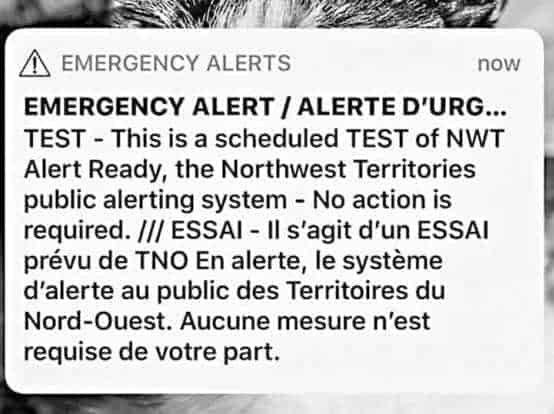The second round of live alert testing found improvements on earlier tests, but showed continued limitations.

Last Wednesday the Department of Municipal and Community Affairs (MACA) administered the NWT's version of the countrywide, Alert Ready system. The testing is aimed towards incorporating cellphones into the emergency alert system that already amalgamates FM radio and television signals.
Ivan Russell, manager of emergency services with the department, said the testing had some hiccups but said they had previously identified that not all phones would be reached with this round of tests.
“We did have some hiccups, but that's normal and that's why we do testing. This testing helps to address those issues that come up with technology,” said Russell. “From the start it was recognized not all cellphones would receive the alert. This could be due to incompatibility of the device or for lack of connection to the LTE network.”
The last round of tests were conducted in May. A spokesperson with that department told Yellowknifer at the time that there was 'no rhyme or reason' as to which phones received the alert. Russell said the missed phones this time around were identified beforehand. According to the Alert Ready website all phones that are updated and on a major carrier including Bell and Telus, should receive the alerts.
Yellowknifer had received reports from the community that a number of phones were dropping calls shortly after the alerts were issued, however Russell said he was unaware of any cases of malfunctioning phones.
“I'm not aware of any complaints of malfunctioning phones,” said Russell. “Nobody has brought it to my attention and I've reached out to quite a few people following the test.”
Russell says the schedule will see bi-annual tests each spring and fall continued next year. He says that the system could now potentially be used in the case of a true emergency.
“The current schedule calls for testing twice a year. In the fall and then in the spring. The system for the NWT is available for use and we could use it in a real emergency,” said Russell.
Moving forward the department is now building a website that will host all ready alert tests issued in the territory once they have gone out to phones, radios and televisions. The website will also host additional information to build on the limited text that can be issued to mobile devices. That website is expected to go live next year.